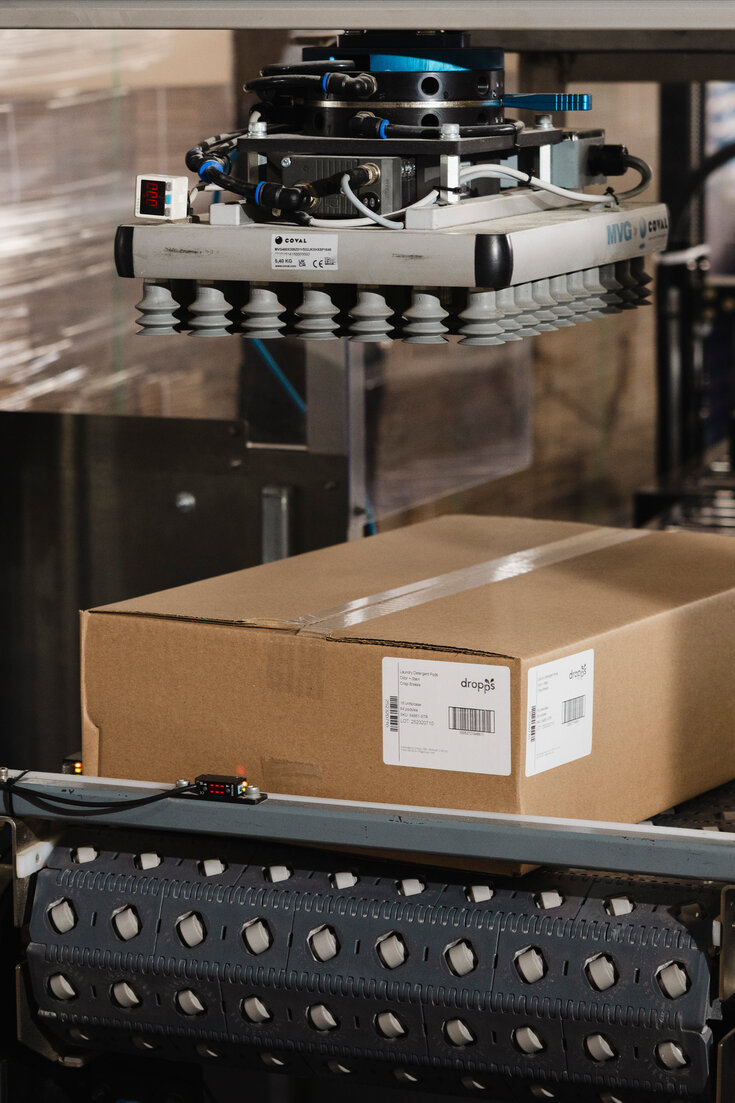At S&F Foods, employees struggled with the physically taxing task of lifting heavy cardboard boxes from a conveyor belt and stacking them onto pallets for shipment. To ease this burden, plant manager Mike Calleja decided to bring in a robot.
Purchasing a robot outright can cost up to $500,000, and Mr. Calleja was uncertain about its effectiveness. Instead, he opted to rent a robot from Formic, a company based in Woodridge, Illinois, which handles installation, training, programming, and maintenance. The rental fee is approximately $23 per hour, comparable to a human worker’s wage.
“We maintain low turnover because we focus on making jobs less strenuous,” said Mr. Calleja. Operating a relatively small facility outside Detroit, S&F Foods produces about 65,000 pounds of frozen food daily. The previous stacking process was described by him as a “backbreaking job.”
With many manufacturers facing ongoing difficulties in attracting and retaining workers, automating the most physically demanding roles is emerging as an effective strategy to keep employees engaged.
The robot rental business model is poised to reshape American manufacturing by making automation accessible to small and medium-sized enterprises, which historically have been slower to adopt such technologies.
According to the Manufacturing Extension Partnership, nearly 93 percent of the approximately 244,000 U.S. manufacturers employ fewer than 100 workers, and 75 percent have fewer than 20 employees. These smaller companies often lack the capital or expertise necessary to integrate automation equipment into their operations.
“This is where the opportunity lies,” said Saman Farid, CEO of Formic, which rents robots to about 150 factories nationwide.
Formic’s clients range from dog food producers to automotive parts manufacturers, many of which are family-owned businesses that frequently turn down orders due to labor shortages. Automating the most repetitive and physically demanding tasks allows these companies to redeploy workers to more engaging roles, improving job satisfaction and increasing output.
Mr. Farid noted that some factories face turnover rates as high as 100 percent for certain roles, forcing managers into an endless cycle of hiring, training, and screening new employees. “When robots take over the dull, dirty, dangerous, and strenuous tasks, workers are more likely to stay since they’re no longer lifting heavy boxes for 12 hours a day,” he explained.
Robot rental firms specialize in automating common tasks such as stacking boxes, sorting parts, welding, or feeding materials into machines — activities that often result in bending, lifting, and twisting injuries among human workers.
Formic is among at least three robot rental companies launched in 2020 in response to the acute labor shortages caused by the Covid-19 pandemic. Las Vegas-based AAA20 Group leases palletizing robots that stack and wrap boxes for about $4,950 a month.
RobCo, a German firm also established in 2020, recently acquired the assets of Rapid Robotics, a U.S. company that was closing, to strengthen its presence in the American market. RobCo plans to open a San Francisco office next month and is preparing a manufacturing facility in Austin, Texas, to produce rental robots, according to Lorenzo Pautasso, general manager of RobCo’s U.S. division.
Mr. Pautasso explained that many U.S. clients adopt robots primarily to reduce employee exposure to harmful substances or hazardous tasks.
“The goal isn’t to cut labor costs,” he said. “It’s about maintaining a reliable workforce where employees present today will continue to be there tomorrow.”
Matt Kunach, operations manager and co-owner of MattPak, a contract manufacturer of detergent pods in Franklin Park, Illinois, said renting three palletizers from Formic has slightly reduced costs but mainly decreased injury risks for his workers.
Employees who previously stacked boxes have been reassigned to other roles, freeing capacity to expand product lines. Some have been promoted to machine operators and line leaders, positions with greater responsibility and higher pay.
Although robot rentals currently represent a small but growing segment of the global market, the International Federation of Robotics reports that in 2023, approximately 113,000 transportation and logistics robots were sold worldwide — a 35 percent increase from the previous year — with around 5,000 units available for rent, marking a 20 percent rise.
The robot rental model has gained traction in Silicon Valley, where investors favor the recurring revenue and focus on long-term client relationships over one-time sales, according to a report from last year. Companies embracing this model tend to secure more funding at higher valuations.
Sankaet Pathak, founder of the now-defunct fintech company Synapse Financial Technologies, has raised over $11 million for his new venture, Foundation, which aims to build and lease humanoid robots.
Foundation has deployed robots in a car factory in Georgia, where they sort parts on a conveyor belt. Though still developing, these humanoid machines command rental fees of $33,000 per shift. Currently operating one shift per day, the company hopes to have them running continuously. Factory workers view these humanoids more as curiosities than threats.
“It would become more controversial if robots started replacing jobs that people actually enjoy,” Mr. Pathak said.
He believes revitalizing American manufacturing depends on widespread adoption of human-like robots, given that most assembly lines were designed for human workers.
However, Mr. Farid, with extensive factory experience in China, emphasizes that robots should not be constrained to human form. For example, the robot arm at the S&F Foods plant uses a vacuum suction tool rather than a hand to efficiently pick up and place boxes on pallets, outperforming human capabilities.
There are challenges ahead. Recent legislation allows businesses to fully deduct the cost of new equipment in the year it is placed in service, making outright robot purchases more affordable, according to Kevin Harris, a partner at EisnerAmper, a firm specializing in accounting and tax advisory.
Still, some companies cannot afford to buy robots outright or prefer to classify the expense as an operating cost, said Andra Keay, managing director of Silicon Valley Robotics, an association supporting robotics commercialization. Others hesitate to commit amid rapid technological advances or want to trial solutions before investing.
“Robot rentals are an excellent way to introduce automation,” Ms. Keay remarked. “Robots help address labor shortages and make jobs safer and more enjoyable.”


0 Comments
No comments yet. Be the first to comment!